Salvation by grace is all over the Book of Mormon like white on rice.
And by grace, I don’t mean the modern Mormon misconception of a little dollop doled out by God after we have done everything we can possibly do. I mean the superabundance of grace God gives us to be saved without our doing anything at all.
A grace separate and apart from works. A grace that precedes works. A grace God is dying to give us for the asking.
Grace figures in every major conversion story in the Book of Mormon.
These stories are structured so there can be no mistake the protagonists are saved by grace without their having to do anything to earn it, to qualify for it, or to merit it. That is because, time after time, the people being saved are in a state where they are rendered immobile.
In other words, they literally can do nothing. They can’t move a finger. And so the salvation that comes to them while in this state cannot be the result of any work of their own, but purely and solely through the grace and mercy of God.
Story No. 1 (Mosiah 27; Alma 36)—Mine by the Right of the White Election!
Alma the Younger, full of sin, while on his wicked way to destroy the Church, ran into an angel blocking his path. Alma was struck down by the angel and remained motionless for three days.
But things were going on in his mind . . . and in his heart.
Alma, recognizing his plight, called upon God for mercy, and was instantaneously saved by the grace of God. (Alma 36:18) 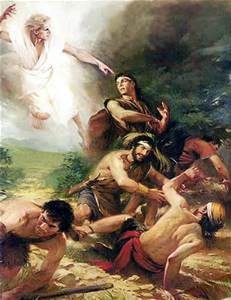 Upon arising, he proclaimed that he was “redeemed of the Lord; behold I am born of the Spirit.” (Mosiah 27:24)
Upon arising, he proclaimed that he was “redeemed of the Lord; behold I am born of the Spirit.” (Mosiah 27:24)
Alma the Younger was saved by grace. All he had to do was ask. It was not based on any works of his, for the only works he had done before being saved were evil, and he could do no work at all after he was struck down.
And by way of warning, Alma relays a message from God to the rest of us:
Marvel not that all mankind, yea, men and women, all nations, kindreds, tongues and people, must be born again; yea, born of God, changed from their carnal and fallen state, to a state of righteousness, being redeemed of God, becoming his son and daughters;
And thus they become new creatures; and unless they do this, they can in nowise inherit the kingdom of God. (Mosiah 27:25-26)
So not only Alma but all of us must be born again in a similar manner to be saved.
Story No. 2 (Alma 18-19)—Mine by the Royal Seal!
Lethal Ammon, his sword still smoking with the blood of unruly Lamanites, preached salvation by the blood of Jesus in the court of King Lamoni.  The king, smitten by his sins, cried to God for mercy and “fell unto the earth, as if he were dead.” (Alma 18:41-42) King Lamoni awakes days later long enough to claim he has seen his Redeemer; then sinks again to the earth along with the queen. The servants all start to “cry unto God” and fall to the earth, as well.
The king, smitten by his sins, cried to God for mercy and “fell unto the earth, as if he were dead.” (Alma 18:41-42) King Lamoni awakes days later long enough to claim he has seen his Redeemer; then sinks again to the earth along with the queen. The servants all start to “cry unto God” and fall to the earth, as well.
When the queen is raised, she has been saved from an awful hell by Jesus, and blesses God for his mercy. (19:29) And when the servants are raised, they claim that their hearts have been changed; that they have no more desire to do evil. (19:33)
Story No.3 (Alma 22)—Mine by the Sign in the Scarlet Prison
Faithful Aaron, freshly freed from prison, teaches Lamoni’s father that man “could not merit anything of himself,” but that through the power of Jesus, he may be freed from spiritual captivity if he “will bow down before God, and call on his name in faith.” (22:16)
This the king does and “was struck as if he were dead.” (22:18) Upon being raised, the king “began to minister” unto his “whole household” such that they, too, “were converted unto the Lord.” (22:23)
Story No. 4 (Helaman 5)—Bars Cannot Conceal!
Nephi and Lehi are thrown into prison for preaching to the Lamanites that “there is no other way nor means whereby man can be saved, only through the atoning blood of Jesus Christ.” (Hel. 5:9)
Though Nephi and Lehi are protected by a pillar of fire, the prison shook, threatening to crush their Lamanite captors, who “were immovable because of the fear which did come upon them.” (5:34) 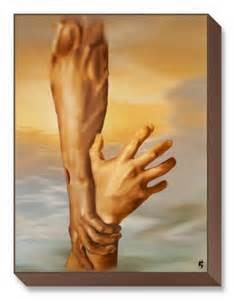 One of the paralyzed Lamanite crew, a backslid Nephite by the name of Aminadab, saw Nephi and Lehi “in shining morning face” conversing with unseen beings above.
One of the paralyzed Lamanite crew, a backslid Nephite by the name of Aminadab, saw Nephi and Lehi “in shining morning face” conversing with unseen beings above.
Cloaked in a Stygian shroud, the Lamanites asked Aminadab what they should do “that this cloud of darkness may be removed from overshadowing us.” (5:40) Aminadab told them to “cry unto the voice,” which the Lamanites did; “yea, they did cry even until the cloud of darkness was dispersed” and found they were “encircled about, yea, every soul, by a pillar of fire,” and “angels came down out of heaven and ministered unto them.”
Brief Recap of the First Four Stories
All four of these conversion stories have in common the theme that those redeemed were struck down or rendered immobile such that they could perform no physical work to aid in their salvation. But saved they were. Not by any work they performed. But purely through the grace and mercy of God.
All they had to do was ask for it. And immediately upon their asking, grace was given them. 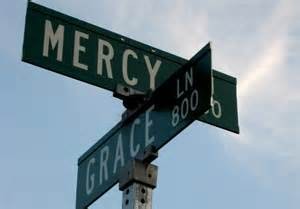 Not sparingly, but abundantly and lavishly, until their cup was not only full but running over.
Not sparingly, but abundantly and lavishly, until their cup was not only full but running over.
Highlighting the fact they did nothing to merit God’s grace, all of these people were wicked and sinful up to the very moment of their salvation. They repented of their sins in their asking for grace, but God did not stint nor require a probation period to prove their worthiness. God’s grace abounded as soon as they asked and they were immediately saved, born again, made new creatures in Christ.
Story No. 5 (Mosiah 1-5)—Obedience is Not the Key to Salvation
By way of contrast, the Book of Mormon provides an example of an entire group of people who were not wicked when they were saved. These are the people of King Benjamin who were “diligent in keeping the commandments of the Lord.” (Mosiah 1:11)
And yet their righteousness did not make them right with God. They were missing something. And that something they were missing was Jesus.
King Benjamin preached a mighty sermon to his people, teaching the perils of trying to get into God’s good graces by way of obey. Realizing their good works were as filthy rags, 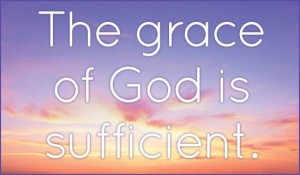 they fell to the earth, and “all cried aloud with one voice, saying: O have mercy, and apply the atoning blood of Christ.” (Mosiah 4:1-2)
they fell to the earth, and “all cried aloud with one voice, saying: O have mercy, and apply the atoning blood of Christ.” (Mosiah 4:1-2)
In response and with no delay, “the Spirit of the Lord came upon them, and they were filled with joy, having received a remission of their sins,” and claimed that the Spirit “has wrought a mighty change in us, or in our hearts, that we have no more disposition to do evil, but to do good continually.” (Mosiah 4:3; 5:2)
And so we see that even righteous commandment-keepers are not saved by their works, but only by the grace of God.
Good works alone are never enough. God’s grace alone is sufficient.
Story No. 6 (1 Nephi 8)—The Other Way to the Tree of Life
In recounting his iconic dream, Lehi focuses so much on others pressing their way to the Tree of Life along the iron rod, it is easy to overlook the point that Lehi arrived by a different route.
In fact, Lehi is not even aware there is an iron rod until he is already at the Tree.
So if Lehi does not get to the 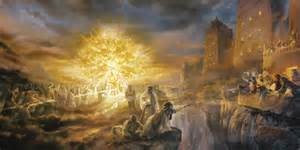 Tree of Life by way of the narrow path and rod of iron, how does he arrive?
Tree of Life by way of the narrow path and rod of iron, how does he arrive?
Lehi follows a gleaming guide into a dark and dreary waste, where he is abandoned and wanders alone many hours in darkness.
What does Lehi do? “I began to pray unto the Lord that he would have mercy on me,” and in response Lehi sees a large and spacious field with a fruitful tree. “And I did go forth and partake of the fruit thereof.”
All this happens in 1 Nephi 8:11. It is not until 1 Nephi 8:19 that Lehi sees there is a rod of iron leading to the tree, and not until the following verse that he sees the strait and narrow path.
There is another way to the Tree of Life. It is Lehi’s way. It is the way of grace given immediately to Lehi when he calls upon God for mercy.
To paraphrase Thoreau, “For every thousand hacking at the leaves of salvation, there is one striking at the root.”
Story No. 7 (1 Nephi 7)—Grace in the Details
Brawny Nephi, bound by brothers, prays to God for strength to burst his bands. (1 Nephi 7:17) But God does not give Nephi extra strength to perform this superhuman feat. Nephi will not work his way out of bondage. Instead, God intervenes another way and “the bands were loosed from off my hands and feet.” (1 Nephi 7:18)
God answers Nephi’s prayer, but not in the way Nephi prayed it. Even in the details, the Book of Mormon depicts God’s hand in redemption, and leaves no leeway for Nephi to second guess that maybe he did it himself; or even that Nephi’s strength played any part in his redemption.
Nephi was freed from bondage solely by the grace of God. And God wanted to make sure Nephi knew it.
Graceless?
Though not exhaustive, these seven stories serve to illustrate the overarching Book of Mormon theme of salvation by grace and not by works. Grace illuminates every story and permeates every page.
Nonetheless, LDS doctrine appears to have strayed from its roots. It is common now to hear of salvation coming through works; by “lifting ourselves by our bootstraps”; by doing everything we can possibly  do before grace is applied to make up the difference; to “qualify” ourselves by obedience to have the companionship of the Holy Ghost; that being born again is a process, not an event.
do before grace is applied to make up the difference; to “qualify” ourselves by obedience to have the companionship of the Holy Ghost; that being born again is a process, not an event.
The Book of Mormon teaches the opposite on all these points.
Another such meme, more and more heard, is exemplified in Elder Bednar’s famous General Conference talk in which he likened the plan of salvation to the pickling process. According to Elder Bednar, a person is “born again” from being a cucumber of carnality to a pickle of perfection through a slow and gradual persistent process of upward incrementalization.
After citing the example of the people of King Benjamin, whose spiritual birth occurred quickly and all at once, Elder Bednar strangely states the very opposite,
The spiritual rebirth described in this verse typically does not occur quickly or all at once; it is an ongoing process—not a single event. Line upon line and precept upon precept, gradually and almost imperceptibly, our motives, our thoughts, our words, and our deeds become aligned with the will of God. This phase of the transformation process requires time, persistence, and patience.
But nowhere in the Book of Mormon is there an example of what Elder Bednar describes. And likely there is no such example in all the standard works. There are no stories of people being born again “gradually and almost imperceptibly.”
Rather, all Book of Mormon conversion stories are indeed an event, not a process.
Just as being born the first time is an 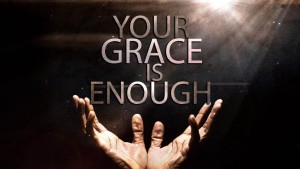 event and not a process, so is being born again.
event and not a process, so is being born again.
It is hard to escape the conclusion that Elder Bednar is actually teaching against the Book of Mormon. And remarkably, he is quoting from the Book of Mormon to do so.
But Elder Bednar is not alone. He merely typifies an increasing trend in the Mormon doctrine of salvation. A trend that diverges significantly from the Book of Mormon itself.
Elder Christofferson struck the same discordant note in April 2008 General Conference:
You may ask, Why doesn’t this mighty change happen more quickly with me? You should remember that the remarkable examples of King Benjamin’s people, Alma, and some others in scripture are just that—remarkable and not typical. For most of us, the changes are more gradual and occur over time. Being born again, unlike our physical birth, is more a process than an event. And engaging in that process is the central purpose of mortality.
Why should the multitudinous Book of Mormon examples be considered “remarkable and not typical”? They appear to have been typical for people in Book of Mormon times. And why do Church leaders never give a scriptural example of what they term “typical”? Could it be because there is no scriptural example to give?
This anti-scriptural dumbing down of salvation expectation is  becoming the rule in LDS Church teachings.
becoming the rule in LDS Church teachings.
And in its place is substituted a plan of salvation completely foreign to the Book of Mormon. A plan based on slow and plodding incremental obedience through sheer force of will.
Now, self-improvement programs have their place. But they will never lead to salvation. Using this method, one can spend a lifetime climbing a ladder only to find at the end it is leaning against the wrong tree.
A Missing Grace?
The question could be asked as to why such a doctrinal shift would occur in the first place, especially considering how diametrically opposed it is to the foundational LDS scriptural text.
Is it possible a gradual and almost imperceptible process of salvation is preferable precisely because it is gradual and almost imperceptible? Is a salvation that transpires invisibly and undetected favored because it is impossible to tell if it hasn’t happened? Are we really just relying on the “arm of the flesh” to be as good as we can be? This smacks more of human effort than God’s intervention.
And indeed, Elder Bednar teaches that the transformation of spiritual rebirth is a “process” that “requires time, persistence, and patience.”
Why does it require time and patience? It is never a process in the Book of Mormon, 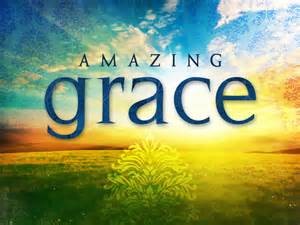 but always an event that happens immediately. No time or patience required.
but always an event that happens immediately. No time or patience required.
Why does it require persistence? Whose persistence? Ours? This sounds perilously close to the doctrine of salvation by works—a doctrine panned in the Book of Mormon by King Mosiah who taught his righteous people they could never get into God’s good graces by mere obedience.
This is hire and salary, not salvation by grace as taught in the Book of Mormon.
In short, why has it become common for the LDS Church to abandon its own scriptures in favor of teaching a graceless plan of salvation?








Excellent. Thank you.
You are most welcome, Milt.
Thank you!
Is teaching salvation (by sheer will-power and discipline), without total reliance on the Savior, anti-Christ? Didn’t Korihor teach this? In Alma 30, doesn’t Korihor teach that salvation was gained by the amount of your work, genius, and effort and that those who demonstrated the most effort fared the best?
This is an interesting point you raise, Jennifer, but I don’t know if I would want to go so far as to say the current Church teachings are “anti-Christ.”
If I said something like that, others might sense a “biting tone” seeping through . . .
In Bob Millet’s book “Grace Works” he recounts when he asked his father about Grace: “Dad, what does it mean to be saved by grace?’ He stared at me for a moment and then said firmly, ‘We don’t believe in that!'” When he asked why not, his father responded, “Because the Baptists do!”
How much of our theology has been shaped by simply being contrarian? I hate to say it, but it hasn’t been until the past few years that I have started to understand what grace is, and much of that knowledge has come from outside sources and evangelical Christians. Unfortunately, I’m afraid I’m not the only Mormon who has grown up with this woeful lack of understanding of grace and it makes me feel cheated that I wasn’t taught this as a youth. I always felt like there was so much required of me and that I would never measure up. Now I understand that not being able to measure up isn’t a failure, but it is precisely what brings us to Christ to rely on His grace.
Searching past conference talks reveals precious little on grace. Even worse, when it is mentioned it is described as “an enabling power” which makes it sound like it’s nothing more than a turbo boost for our own good works. Uchtdorf’s talk on grace during the last conference was a much needed blast of fresh air. I hope it signals a change on how we understand grace in the church.
It’s a shame that this has not been taught from the pulpit by our leaders. However, it is a joy to hear voices on websites such as this proclaiming the gospel of grace, not to mention excellent books published by Brad Wilcox, Bob Millet and Adam Miller. To me, this only serves to illustrate how we, as members of the body of Christ, have the responsibility and power to affect change. Not all knowledge comes from top down.
Thanks so much for your comments, Eric!
I agree with you that the LDS Church has formed many of its positions in reaction to the beliefs of others.
Another example would include how the LDS today eschew the symbol of the cross, little knowing it was part and parcel of LDS worship into the beginning of the 20th Century.
Or focusing so much on the literal nature of the “bread and water” as to all but lose sight of the fact that it is the flesh and blood of Christ.
Or focusing so much on how the members of the Godhead are separate as to all but lose sight of how they are one.
Or focusing so much on viewing things through the lens of patriarchy as to all but lose sight of the Divine Feminine.
And the list goes on . . .
This would have been a nice article had it not been for the biting tone that seeps through all of Corbin’s writings on mormonism and its leaders. Corbin, read Elder Uchtdorf’s talk on grace from the most recent conference. It’s titled “The Gift of Grace” – I think you’ll like it. Or maybe not since it was written by an LDS apostle.
I am aware of the fresh Teutonic Uchtdorfian breeze to which you refer.
And I do like it. Very much.
At least we have one general authority who appears to have read the Book of Mormon.
And believes it.
Dang it!
There’s that biting tone seeping through again.
I really have to do something about that.
“Teutonic Uchtdorfian”
That’s great.
*bows deeply*
It’s interesting that you note 1 Nephi 7 as an example of grace coming without works. I remember Bednar citing it as an example of the opposite. Nephi didn’t expect God to magically solve his problem. He prayed for strength to overcome with trial:
“Nephi is an example of one who knew and understood and relied upon the enabling power of the Savior. In 1 Nephi 7 we recall that the sons of Lehi had returned to Jerusalem to enlist Ishmael and his household in their cause. Laman and others in the party traveling with Nephi from Jerusalem back to the wilderness rebelled, and Nephi exhorted his brethren to have faith in the Lord. It was at this point in their trip that Nephi’s brothers bound him with cords and planned his destruction. Now please note Nephi’s prayer in verse 17: “O Lord, according to my faith which is in thee, wilt thou deliver me from the hands of my brethren; yea, even give me strength that I may burst these bands with which I am bound” (emphasis added).
Brothers and sisters, do you know what I likely would have prayed for if I had been tied up by my brothers? My prayer would have included a request for something bad to happen to my brothers and ended with the phrase “wilt thou deliver me from the hands of my brethren” or, in other words, “Please get me out of this mess, now!” It is especially interesting to me that Nephi did not pray, as I probably would have prayed, to have his circumstances changed. Rather, he prayed for the strength to change his circumstances. And may I suggest that he prayed in this manner precisely because he knew and understood and had experienced the enabling power of the Atonement of the Savior.
I personally do not believe the bands with which Nephi was bound just magically fell from his hands and wrists. Rather, I suspect that he was blessed with both persistence and personal strength beyond his natural capacity, that he then “in the strength of the Lord” (Mosiah 9:17) worked and twisted and tugged on the cords and ultimately and literally was enabled to break the bands.”
The two definitions of the same episode here are exactly opposite. Interesting. He gives other examples with perhaps more scriptural back up (mosiah 24 “And now it came to pass that the burdens which were laid upon Alma and his brethren were made light; yea, the Lord did strengthen them that they could bear up their burdens with ease, and they did submit cheerfully and with patience to all the will of the Lord” (emphasis added).)
That being said – I’m more of an Uchtdorfian-evangelical kind of Grace girl myself.
That is a great quote from Elder Bednar, Kristine!
I read him as once more interpreting the Book of Mormon against what the text plainly says.
In spite of the fact that the text says the bands were “loosed” from off his wrists, Elder Bednar sees that as Nephi straining and twisting his wrists with that little extra bit of strength God gave him in answer to his prayer.
And has to bring in Mosiah 9:17 from left field to do it.
I am beginning to sense a pattern here . . .
Kristine A,
Well said Kristine A.
Let’s try some balance and perspective here. The post continually conflates being born again, being saved, and experiencing grace. They are not interchangeable; they are not synonyms. Being born again is not being “saved” in the fullest sense – it’s being born again; that is, born to see spiritual reality. It is indeed a gift of grace; from the wretches we are we are made clean, spiritually renewed; fit to be companions with the Spirit. What we are is cleansed from sin. What remains? To stay that way. Being “born” suggests subsequent growth.
How does that happen? Well, let’s hear Jesus: “Wherefore, settle this in your hearts, that ye will do the things which I shall teach, and command you.” (JST Luke 14:28). What?? “Do” things – things we are “commanded” to do? Can this be right? Even … required? Looks like it. “If ye love me,” Jesus has been saying in one fashion or another since Day One, “keep my commandments.” Apparently, He has some.
Nephi understood this:
“I also have charity for the Gentiles. But behold, for none of these [his people, the Jews, the Gentiles] can I hope except they shall be reconciled unto Christ, AND enter into the narrow gate, AND walk in the strait path which leads to life, AND continue in the path until the end of the day of probation.” (2 Nephi 33:9, capitalization mine.)
I take it that this – salvation – would require time, persistence, and patience.
Does being born again necessarily require this? No, as the Book of Mormon attests. Did everyone in the Book of Mormon, in their thousands, duplicate King Lamoni’s experience? It, doesn’t say that, either. But an experience of grace, even being born again, is clearly not going to be enough.
“And now, my beloved brethren, after ye have gotten into this strait and narrow path, I would ask if all is done? Behold, I say unto you, Nay; for ye have not come thus far save it were by the word of Christ with unshaken faith in him, relying wholly upon the merits of him who is mighty to save. Wherefore, ye must press forward with a steadfastness in Christ, having a perfect brightness of hope, and a clove of God and of all men. Wherefore, if ye shall press forward, feasting upon the word of Christ, and endure to the end, behold, thus saith the Father: Ye shall have eternal life.” (2 Nephi 31:19)
So it would seem that enduring to the end fits in life’s journey along with grace. Why?
“And we know also, that sanctification through the grace of our Lord and Savior Jesus Christ is just and true, to all those who love and serve God with all their mights, minds, and strength. But there is a possibility that man may fall from grace and depart from the living God; Therefore let the church take heed and pray always, lest they fall into temptation; Yea, and even let those who are sanctified take heed also.” (D&C 20:31)
“For it is impossible for those who were once enlightened, and have tasted of the heavenly gift, and were made partakers of the Holy Ghost, and have tasted the good word of God, and the powers of the world to come, if they shall fall away, to renew them again unto repentance; seeing they crucify to themselves the Son of God afresh, and put him to an open shame.” (Hebrews 6:4-6)
What Paul taught: In spite of unrighteousness, even extreme unrighteousness, God allows forgiveness through acceptance of Christ’s Atonement by repentance & baptism. After that, a righteous life with good works is required. Paul gives a strict list of moral conditions for maintaining the relationship in God’s grace; we can either move toward perfection and maintain grace despite our weakness or lose the grace we were freely given.
What Jesus taught: “If any man will come after me, let him deny himself, and take up his cross daily, and follow me” (Luke 9:23). “And whosoever doth not bear his cross, and come after me, cannot be my disciple” (Luke 14:27). The Savior’s grace is not going to bring to His Kingdom people who will not follow Him, reject sin, and keep His commandments—or will not follow His servants, either the Apostles in His time or the Apostles in ours. We can hardly call Christ our Lord – and then not do what He says.
Lehi and Lamoni weren’t any more exempt from this than we are.
What we have, as so often happens in the grace vs. works slugfest, is a false dilemma. It is not grace VERSUS works (Either salvation is a gift from God OR it’s something we earn by our works.) What we have is a covenant with Jesus to follow Him, We make that covenant by receiving the ordinances of salvation, denying ourselves of ungodliness & doing our best to keep His commandments. These efforts evidence our willingness to remain in the gospel covenant. What He does is forgive our sins, lift our burdens, recreate our nature, raise us from the dead, and qualify us for eternal life. We can do none of things on our own. The peace and joy of the gospel are fruits of the Spirit, not a psychological result of willpower and personal grit. We can and do experience grace in any number of ways as we follow the Savior. We are indeed saved by the grace of God, provided we do what He says per the covenants we made. We don’t get to renege on our covenants and expect to reside in bliss.
I appreciate your well-researched treatise on the subject, Tim.
But ultimately, I think your argument is with the Book of Mormon.
Not with me.
Corbin,
Corbin, I don’t think Tim’s post is an argument against you or the Book of Mormon. It’s just a well-thought out statement on grace and salvation.
But as I think I have demonstrated in the blog, salvation in the Book of Mormon comes only through grace and never by works.
King Benjamin makes it clear that we can never work our way into salvation.
And I agree Corbin – in fact that’s a quote from Ucthdorf’s talk. Here’s his exact quote: “Even if we were to serve God with our whole souls, it is not enough, for we would still be “unprofitable servants.” We cannot earn our way into heaven; the demands of justice stand as a barrier, which we are powerless to overcome on our own.”
And this is why I stood up and cheered when I listened to President Uchtdorf’s talk.
Fortunately, I wasn’t in the Conference Center at the time.
So it seems to me that Elder Uchtdorf is teaching something different from Elders Bednar and Christofferson.
Excellent piece, particularly the insight about Lehi’s path to the tree.
I’ve been reflecting on this subject as well, though more in terms of the Book of Mormon sermons. I feel as though they’ve helped me better understand Paul’s arguments in the NT about the utter inadequacies of the law (any law, not just the Law of Moses) to get us to salvation. We need grace because it’s the only way we can make it. I feel like that was taught powerfully by Lehi, Nephi, King Benjamin, Amulek, and others but much less powerfully in the modern Church. Like you, I worry this leads many members to miss out in our connection with God and in our experience of salvation.
Thanks for your comments, Jason.
You are right that salvation by grace is all over Book of Mormon sermons as well as the stories.
I chose to focus on the stories for this piece because they seem to me so straightforward in their message, and deliberately designed in such a way as to ensure the reader understands that being saved/born again has nothing to do with any works we perform.
And I agree that we tend to discount the importance of grace in current LDS teaching.
The way it was taught to me was, in effect, that we have to perfect ourselves through our own will power, but that Jesus is there to clean up after us if we make any mistakes along the way of our own self-perfection.
Sort of like a janitor with a mop.
This kind of “Janitor Jesus” is very different from the Jesus I encounter in the Book of Mormon.
Amazing grace, indeed.
I find the wording of two BOM verses intriguing. The first is very familiar – 2 Nephi 25:23 uses this phrasing: “for we know that it is by grace that we are saved, after all we can do.”
Later in Alma 24, the Anti-Nephi-Lehies are converted. These people have committed murder and the most heinous of sins. What is “all they can do”? Verse 11 explains: “And now behold, my brethren, since it has been all that we could do (as we were the most lost of all mankind) to repent of all our sins and the many murders which we have committed, and to get God to take them away from our hearts, for it was all we could do to repent sufficiently before God that he would take away our stain—”
All they could do was repent. All they could do. As you know, repentance means a change of heart and mind that leads to a change of behavior (from the Greek) or a turning toward a new direction (from the Hebrew). So all we can do is repent and face Christ. That’s it. Once a change of heart occurs, our behavior naturally falls in line – quickly in some ways, more slowly in others but it changes without checklists and rules because our hearts and minds are fundamentally different. We’ve experienced a paradigm shift so radical that we are no longer the same.
This is not a change brought about through our own efforts. Inner transformation doesn’t come that way – we are made new by Christ, not by rituals, rites, ordinances or observances. Those acts are dead. (See again 2 Ne. 25) They can put us in a position to recognize the miracles of mercy and grace and recognize the Messiah who offers them – that is the purpose of these dead works – but they can’t save. And if the scriptures are any indication, faithful rule and ritual observance isn’t any kind of guarantee that they will help us recognize the Messiah.
So yes, grace.
It’s all grace.
It’s only grace.
Thanks so much for your wonderful insights, Cate!
I especially like the cross-reference between 2 Nephi 25:23 and Alma 24:11. It helps me to understand what has come to be a badly misunderstood verse (2 Nephi 25:23).
I want to point out here that it was my wife who came up with the title to this blog.
I was struggling with horrible titles like, “Amazing Book of Mormon Grace.”
We went back and forth brainstorming ideas, until she finally came up with, “Missing Grace.”
I said, “What about ‘A Missing Grace,’ because that sounds like ‘Amazing Grace.'”
She said she liked both of them, but she favored the first because even though there wasn’t that semi-obvious connection with “Amazing Grace,” “Missing Grace” could be interpreted a number of different ways, all of them germane to the point of the article.
And that, as they say, is the story behind the story.
I just wanted to give credit where credit is due.
Which is kind of what being saved by grace is all about.
Where does the basis of the teachings of doing all we can do, then after that grace will come in to make up the difference come from? It is what I was taught all throughout my childhood in Sunday School, seminary, institute, etc.
The passages mentioned (and others of course) in the Book of Mormon seemed very Biblical, or very traditional Christianity whenever I read them (as does much of early Mormonism,) but I don’t know if I ever really put much thought into it. I just filtered it through my preconceived notion of works + grace is what it takes, and called it a day.
Hi, Dusty!
Your experience in being taught grace comes only after all we do is the same as mine, and the same as millions of modern Mormons.
Because that is what is taught in the correlated materials and in General Conference.
As Cate points out, it comes from a misunderstanding of 2 Nephi 25:23.
The misunderstanding is that Nephi is saying we first have to do everything we can do before we receive the grace of God to make up the difference.
There are many problems with this interpretation.
The first is that it assumes anybody is capable of doing everything they can do in the first place.
Nobody does everything they can do. No matter how much you do on your own, there is always something else you could have done.
The other problem is that it plays into the idea that we are capable of doing anything good at all on our own.
We are not. And this is where the Book of Mormon challenges our assumptions that we can do good separate and apart from God and his grace.
The Book of Mormon teaches us that the natural person is an enemy to God, and must remain that way unless he or she does something. But the something they have to do is not a physical work.
What they have to do is get out of God’s way! They have to stop getting in the way of his attempts to save us by thinking we can do it on our own.
The operative word in King Benjamin’s speech is that they have to “YIELD to the enticings of the Holy Ghost.”
Unless they do this, they must remain in a natural or fallen state.
Unless we are born again, we are evil.
And because we are evil, we cannot do that which is good.
If this sounds radical to Mormon ears, let me quote from Mormon:
Moroni 7:10–“Wherefore, a man being evil cannot do that which is good; neither will he give a good gift.”
Humankind is fallen until they are born again through the grace of God.
Because they are fallen, they cannot do that which is good.
Only AFTER we are born again through the grace of God are we able to do that which is good.
And it is not we that are doing the good works, but it is God who is working through us.
As Mormon goes on to say in his sermon:
Moroni 7:12–“Wherefore, all things which are good cometh of God.”
Not some good things, but all good things.
This should disabuse the Book of Mormon believer that they are capable of doing anything good separate and apart from Christ.
As Cate said above:
So yes, grace.
It’s all grace.
It’s only grace.
I have pondered on this topic for sometime now, and I am most grateful for your post Corbin as well as Rock Waterman’s post last Friday.
I have experienced this instant Grace first hand, but it was not because of my asking. I was desperate and it came. So I am a little confused when it is suggested we must ask for it. Cate’s words ring true to me Repentance you must ask for, but Grace?
Hi, Maryann!
I think the “desperation” of which you speak is at least as important as the asking.
The Book of Mormon gives us many permutations of the story of salvation by grace, and in each case those saved are “desperate.”
And Alma the Younger asks for mercy, not out loud, but in his head.
And that is another point–the request is almost always couched in terms of asking for mercy, which seems the equivalent of grace in the Book of Mormon.
Why are the people who ask for mercy desperate? Because they realize they are hopelessly lost and they absolutely must have the mercy of God to be saved.
They know they cannot do it on their own. It is not in their power.
This is what causes their desperation.
It is only when they call unto God for his mercy from the depths of desperation that they are saved.
So when you speak of being saved from the depths of your desperation, that rings true in an important way to the stories in the Book of Mormon.
Mercy is what He gives. Mercy is “compassion or forgiveness shown toward someone whom it is within one’s power to punish or harm”. Mercy acknowledges that the power to reconcile is all in the hands of Christ. (see Moroni 7:27-28)
Grace, on the other hand, is an unmerited kindness, a freely given gift which we can in no way deserve. It is ours only to receive.
These are not separate concepts but the same concept from two different vantage points.
But that’s just it Corbin; my desperation did NOT come from knowing I could not do it. No, no (I’m a good mormon girl) my desperation came from trying too hard to earn it.
That is what makes Grace so sweet….It was an unmerited gift as Cate suggests.
I believe those who keep suggesting we EARN it have never tasted it.
I think grace often comes after a person has tried their best to keep the commandments and then finding they cannot.
At least, that’s the way C.S. Lewis put it.
It is sometimes only after we discover we are incapable of keeping the commandments we think God wants us to keep that we despair of ever being righteous on our own and open ourselves up to the grace of God.
In this way, there is a relationship between the commandments and grace, but it is not the relationship Mormons traditionally have in mind.
Maryann,
Could it be that you had already received grace? Is it possible that what you felt in the relief of your desperation was a further gift already attached to the gift of Grace (Christ) received by you?
Paul’s own reliance on God for grace is a powerful testimony to thegrace dynamic. He states in 1 Corinthians 15:10–“By the grace of God I am what I am . . . . I worked harder than any of them, though it was not I, but the grace of God that is with me.”
God’s grace supplied the energy for discipleship. In another word–work! We see every bit of energy expended was all because of grace. Thus, the very relief from fear, from desperation, from spiritual captivity; growing in faith, the desire to do good–is an extension of grace already received.
The sweetness of the companionship of God’s spirit, aka The Holy Ghost, perhaps comforted you, as was promised, when you first received HIM.
I believe the grace of God changes our hearts in an instant! We desire no more to do evil. We are born again. This renewal unshackles us from the carnality of the world, and the petty, capricious, bigoted rhetoric of men.
We are free.
Everyday, Grace flows through us. He blesses us with unexpected and unearned favor. We mature by letting Grace flow into our hearts; and by THEN toiling in His kingdom with the energy that Grace provides us. Grace comes first. Then work. The LDS church has it backwards.
We are true to the gift of grace, not by resting on our laurels, but by jumping in and pushing His work…the work of human kindness, succor, rescue, feeding the poor, clothing the naked, ministering to the oppressed…forward! This is the work of grace that sends our roots deepest. We become fully developed. This is where we become His own.
His–not by ordinances. Not by visiting teaching/home teaching, keeping a journal, a garden, baptizing the dead, abstaining from coffee, tea, daily meat, studying scriptures, going to all church meetings, accepting callings, the list goes ever on…
Grace is a gift. It is not an earned privilege for members of the white-shirted club. No keys needed.
A gift.
Thank you God!
Corbin,
I think it may be worth considering the possibility that the Book of Mormon does not necessarily speak with one voice here. I think the notion of being born again as an act of grace, not works is abundantly emphasized by Alma (both Almas), Abinadi, and Mormon, and also taught by Jacob, though perhaps with less emphasis. But Nephi tends to focus a bit more on works. When he describes “the doctrine of Christ,” Nephi says that it is faith, baptism, receiving the holy ghost, and enduring to the end. But when Jesus himself says “behold I will declare unto you my doctrine,” he describes his doctrine as faith in Christ, repentance, baptism, the promise of the holy ghost, and the unity of the Godhead. Personally, I see Jesus as sort of taking the middle ground between Nephi and the later prophets, and reconciling or reuniting these two different strands of thought.
This is a really good insight, JKC.
I do think that we have different views expressed in scripture on the same subject.
That should perhaps not surprise us as we can see the same thing in the New Testament writings of Paul and James.
We can even see it today in the LDS Church between the General Conference addresses of President Uchtdorf as opposed to Elders Bednar and Christofferson.
I see Nephi as going through a growing process in this understanding–developing from a burly youth who thought he could do it all himself (1 Nephi 3:7!) into an older man who cries unto God in 2 Nephi 4:
17 O wretched man that I am! Yea, my heart sorroweth because of my flesh; my soul grieveth because of mine iniquities.
18 I am encompassed about, because of the temptations and the sins which do so easily beset me.
19 And when I desire to rejoice, my heart groaneth because of my sins; nevertheless, I know in whom I have trusted.
* * *
34 O Lord, I have trusted in thee, and I will trust in thee forever. I will not put my trust in the arm of flesh; for I know that cursed is he that putteth his trust in the arm of flesh. Yea, cursed is he that putteth his trust in man or maketh flesh his arm.
35 Yea, I know that God will give liberally to him that asketh. Yea, my God will give me, if I ask not amiss; therefore I will lift up my voice unto thee; yea, I will cry unto thee, my God, the rock of my righteousness. Behold, my voice shall forever ascend up unto thee, my rock and mine everlasting God. Amen.
Well said. I definitely think there is a growing process in Nephi’s character. This is a subject for another post, but in my opinion one of the most significant theological changes is Nephi’s progress, after seeing a vision of the incarnation, as a result of his wanting to know the meaning of Lehi’s dream, from believing in “a Messiah,” “a Savior,” and “a prophet like unto Moses” to identifying Jesus as God himself. And that happens to be a major theme in the rest of the Book of Mormon (and the very reason for Abinadi’s martyrdom. That progress brings Lehi and his descendants from Old Testament proto-Christians to full blown Christians.
Another excellent insight, JKC.
I can see you are a diligent student of the Book of Mormon!
Not nearly as diligent as I ought to be. 🙂
When it comes to grace, I find we tend to talk through and around each other. Part of this is vocabulary: “born again”, “saved”, “works”, “grace” – all find their way into sentences where their usage is fairly clear, and at other times where it isn’t so clear. Sometimes the words “born again”, “saved” and “grace” are simply interchanged. What’s the difference between being “born again” and “salvation”. What’s the same? Are they exact synonyms? If I help someone in need today, is that a “work”? If I teach my children the gospel, is that a “work”? If I make out a tithing check, is that a “work”? Does it matter to God whether or not I pay tithing? Is He completely indifferent to it? And so on. Often the usage of these words is like the overlapping circles in Venn diagrams. (Are these still being taught?)
Clearly, the Book of Mormon persons cited in the original post had the experiences recorded. And we’ve had the experiences we’ve had. If our experiences aren’t the same as theirs, are we second class spiritual citizens? Invalid disciples?
What Pres. Uchtdorf said about grace is true. And here’s something from Elder McConkie:
“Suppose we have the scriptures, the gospel, the priesthood, the Church, the ordinances, the organization, even the keys to the kingdom—everything that now is down to last jot and tittle—and yet there is no atonement of Christ. What then? Can we be saved? Will all our good works save us? Will we be rewarded for all our righteousness? Most assuredly we will not. We are not saved by works alone, no matter how good; we are saved because God sent His Son to shed His blood in Gethsemane and on Calvary that all things through Him might ransomed be. We are saved by the blood of Christ. To paraphrase Abinidi: ‘Salvation doth not come by the Church alone; and were it not for the atonement, given by the grace of God as a free gift, all men must unavoidably perish, and this notwithstanding the Church an all that appertains to it.” (quoted in Robert Millet, Steadfast and Immovable, p. 114)
This seems perfectly true to me as well. It’s also true that we make decisions in life – lots of them, and they matter. The ones we made in the pre-mortal world made a difference, right? And there are things called commandments; pretending there aren’t is lunacy. The Ten given to Moses are still in force, I believe. And there are ordinances of the Gospel (Nephi seems pretty keen on baptism). And there will be a judgment. Life is the whole of these.
Grace is the thing holding up the whole of it, or infused throughout it – pick your metaphor. Like a mobile – move one piece here and another piece moves over there – so too with the Plan of Salvation. The whole of it operates because, bottom line, God loves us. We didn’t create ourselves, our bodies, the pre-mortal world, this world, or the spirit world. We didn’t force ourselves to be born here and we have no final control on when we die.
My view is that grace operates across the whole of my life, not just at one point in it.
I must thank you again for the time and detail you are providing to this discussion, Tim.
This is clearly something you have given a great deal of thought to.
I want to address this particular paragraph of what you said, because I think it raises an important issue:
“Clearly, the Book of Mormon persons cited in the original post had the experiences recorded. And we’ve had the experiences we’ve had. If our experiences aren’t the same as theirs, are we second class spiritual citizens? Invalid disciples?”
I think this is important because it seems to me that LDS leaders such as Elders Bednar and Christofferson are trying to address this very issue.
I believe they perceive a vast majority of LDS (including themselves?) who have never had the experiences of those recorded in the Book of Mormon. And they do not want those members to feel, as you eloquently put it, they are “invalid disciples.”
And yet Alma the Younger says one must receive such an experience in order to be saved.
Their response appears to be not to encourage members to have this experience for themselves, but instead to substitute an entirely different plan of salvation from that recorded in the Book of Mormon.
By doing so, they are encouraging the members to believe they are on the right track when they haven’t even gotten through the front door.
Although I can understand their motivation for teaching this way, I am not certain it is doing anybody any favors.
Not in the long run, at least.
My question lately has been if we are saved by grace alone then for us Mormons is Jesus alone enough? Could I never go through the temple and receive exaltation in the celestial kingdom by my faith in his grace alone or is it still Jesus plus the temple, Jesus plus x ordinance, etc? Jesus meaning his grace.
This might come across as a little cynical vis-a-vis the LDS Church, but according to the Book of Mormon, the answer to both of your questions is “yes.”
Smith wrote the Book of Mormon long before the idea of the temple (in the Nauvoo-style iteration, at least) had even entered his head. That’s why you see nothing concrete about the temple, or even any ordinances other than baptism and sacrament, in the BoM.
I agree with you, Andrew, that it is beyond dispute that Joseph Smith in his career added many doctrinal layers to what is found in the Book of Mormon.
Which raises the question (asked many times before) what we are to make of the D&C passage claiming the Book of Mormon contains the fullness of the gospel.
JKC,
I feel like I should also say, if it wasn’t apparent in my earlier comment, that I completely agree that the Book of Mormon is very heavy on salvation by grace alone.
But salvation by grace alone is misunderstood by many LDS. They think it means that as long as you confess Jesus, you can go on indulging in all kinds of wickedness and you are still saved. In other words, cheap grace.
In my view, the breakdown is often because many people confuse the mechanism of salvation (grace and grace alone) with the criteria for salvation (the “gospel” or the “conditions of repentance”). In other words, there are two different questions that are often confused:
First, who will be saved? The answer, of course, is all those who receive grace. And those who receive grace in its fullness are those who repent sincerely with faith in Jesus, and are baptized.
Second, how are those who are saved, saved? The answer, of course, is by grace and grace alone and nothing else. This does NOT mean that grace only applies once we are baptized, it means that grace applies immediately as soon as we stop fighting it and yield to the holy ghost. It does NOT mean that repentance and baptism get us 1% of the way there, and grace makes up the other 99%. It means that grace and only grace saves us.
Many LDS get freaked out by the idea of salvation by grace alone because they think it means that somebody can be saved without obeying the gospel (repentance and baptism), but I don’t think it does, because the gospel only tells us who will be saved, not how they will be saved. Grace and grace alone saves all those who will obey the gospel (and, by the way, grace is also the thing that makes it possible for them to obey the gospel in the first place).
We keep the commandments (including the commandment to be baptized) as Paul and President Uchtdorf have said, because God has asked us to, and we love him–because he has changed our hearts through grace–not because doing so will make us worthy of salvation. Only grace can make us worthy. In other words, without grace, the ordinances of the gospel are dead works, but with grace, they become living works, through which “the power of godliness is made manifest.”
Wait….Did you just say God puts a condition on Grace?
No, I don’t think I did. I think grace is given freely, and at least initially, without condition.
But in order to receive salvation, or in other words, to receive grace in its fullness, I think it’s fairly clear that we have to take the initiative ourselves to stop fighting it (in other words, repent). So, to receive the fullness of grace, I think it is fair to say that it is a conditional gift–it is conditioned on our willingness to accept it.
(Also, a conditional gift does not mean that it is not a free gift, or that it is somehow earned by the one who receives it; it just means that if we accept the gift, we also accept the conditions that come with it.)
JKC,
Agreed JKC.
JKC,
Interesting thoughts, JKC.
My experience as a lifelong member of the church is that most people justify a works based theology by making distinctions between salvation and exaltation. “One is free,” they say, “the other we earn through obedience, ordinances, and fidelity to the church.”
This is, of course, nonsense.
Joseph Smith taught that salvation consists in the same life that God enjoys but it seems our human nature compels us to add complexity and make false distinctions – whether because we can’t believe in the goodness of God or we don’t want to believe in a God whose goodness extends equally to people we find hard to love.
In any event, we don’t like things we can’t control and defining the “rules of the game” makes us feel safe and allays fears that God might be unjust, untrustworthy, or capricious.
Again. Nonsense.
God is so much better than we imagine.
Yes, I’ve heard the salvation vs. exaltation explanation. But that doesn’t really work for me because I don’t think the scriptures make the distinction between salvation and exaltation as cleanly as we do. (Kind of like how they don’t make the distinction between sin and transgression that we often make.) It also reduces salvation to something that is limited solely to the resurrection, and not to forgiveness of sins, which strikes me as inconsistent with the scriptures.
Of course, I don’t think that means that we can just stop trying to be obedient, ignore the ordinances of the gospel, etc., and still expect exaltation. That would be cheap grace. But we do those things because God has asked us to, and we love him, not because doing them earns exaltation.
Just some follow up questions and thoughts, how does it being all grace fit into the plan of salvation then? The stories mentioned suggest being saved from a traditional hellish torment taught in mainstream Christianity, rather than the three different kingdoms widely (at least I think widely) taught inside the LDS church programs. If there is so much grace out there ready to be abundantly given if asked for, why the several different kingdoms and levels within the celestial kingdom? Why so many conditions, rules, and emphasis on obedience?(have to be baptized, have to be temple endowed, have to be married etc. for the highest kingdom.) Is it grace that will get your foot in the door to that lowest level, then works that determines how many more steps up you take from there? Or is it as you say, all grace, and only grace that determines your final outcome?
Sorry, just trying to make sense of how this fits in with the commonly taught, and a bit more complicated LDS plan of salvation rather than the typical Heaven/Hell dynamic.
Does this mean I am damned because I haven’t felt that conversion? I haven’t felt that born again feeling. I haven’t felt the spirit, no matter how much I’ve studied, tried, and put all my heart and effort into the promises of Moroni, or asked for grace etc. What of others like me that haven’t made it past that first step?
Just kind of thinking out loud, because I do find it interesting and thought provoking, and many of you on here are far more knowledgeable than me.
Dusty,
The temple liturgy depicts God’s children covenanting, taking on flesh, and then passing through each “world” or stage of growth before finally meeting God at the when, and only when, they are prepared to pass through it.
Grace makes the whole process possible because we progress only as we are prepared to do so. It’s not just salvation from hell but salvation from who we once were. And it’s repeated acts of grace that cause the lights (symbolically in the temple – but real in our understanding) to burn brighter as we learn, progress, and continue to take on His nature and attributes.
Is someone lost who hasn’t experience that powerful conversion? Heaven’s no! Not in my opinion. Every knee will bow and every tongue confess at some point. Spencer Kimball called it an unforced surrender that would claim us all.
There’s so much beauty in the gospel. But alas, there are also so many kids waiting for a ride home from church activities. 🙂 Time for me to fire up the Mom taxi.
Corbin,
“Teutonic Uchtdorfian”
That’s great.
*bows deeply*
You raise a lot of good issues, Dusty, and I want to attempt a response to a couple of them.
1. There is nothing about the teaching of grace that should make anybody feel like a second-class citizen. Grace is the teaching that all are alike unto God and that God desires to bless the lives of all his children and will do so freely and abundantly.
The people who typically don’t like grace are those who feel they are more righteous than others–or perhaps “chosen” by God in some special way separate and apart from others.
To such people, the teaching of grace is anathema.
That is why it is rare to hear the parable of the laborers in the vineyard taught in Church (though if memory serves, Elder Holland took a stab at it a few years ago).
This parable teaches that it makes no difference whether you labor in the vineyard the entire day or just the last hour, God gives a day’s wages to all.
To us, this may seem unfair. Surely it seemed unfair to those who worked the whole day! Why should the person who worked only the last hour get the same pay as the one who worked all day long?
This is where grace comes into conflict with human expectations . . . and human pride . . . and human ideas of justice and fairness.
It is a parable antithetical to a works-based plan of salvation.
2. On the issue of ordinances, you are right that the LDS Church has quite a number of ordinances that it teaches are essential to salvation.
This is another component of a works-based system; for receiving ordinances may very well be considered works, and this is one of the reasons Luther had a famous falling out with his original religion.
But I think it is possible we put more emphasis on the ordinance itself than what the ordinance represents.
In other words, I think the ordinance is not the magic ritual that accomplishes spiritual milestones, but a ritual that suggests the spiritual reality that must be experienced by the recipient.
Let me give you an example.
In the Church, we have the twin ordinances of baptism and confirmation.
We are usually taught that it is the baptism that takes away our sins and the confirmation that gives us the gift of the Holy Ghost so that the third member of the Godhead may be our constant companion, conditioned upon our worthiness.
But we have a passage in the Doctrine and Covenants that suggests such things can happen separate and apart from the ordinances that convey the ritualistic message.
This is D&C 20:37, received when the Church of Christ was organized in 1830. Here we find the qualifications required of those who would be baptized into the Church.
But in order to be baptized, one must already have received a remission of sins by the Holy Ghost!
Here is the verse:
D&C 20:37–“And again, by way of commandment to the church concerning the manner of baptism—All those who humble themselves before God, and desire to be baptized, and come forth with broken hearts and contrite spirits, and witness before the church that they have truly repented of all their sins, and are willing to take upon them the name of Jesus Christ, having a determination to serve him to the end, and truly manifest by their works that they have received of the Spirit of Christ unto the remission of their sins, shall be received by baptism into his church.”
So this revelation appears to say that a person can (and here should!) receive a remission of their sins BEFORE they are baptized.
And that this remission of sins comes by receiving the “Spirit of Christ.”
This is one of the reasons I conceive of ordinances as indicators of spiritual realities that must be experienced; the ordinances are not the realities themselves.
Just some thoughts.
I really enjoyed this post, Corbin! You make a great case that the Book of Mormon is really grace-focused. From what little I know, it would kind of make sense that it would be, considering that it was really early in Joseph Smith’s body of work, before he had developed some of his newer theological thinking. The Book of Mormon sounds pretty Trinitarian too, for example. Anyway, great stuff!
You make a good point, Ziff.
It is hard to deny there was theological development on a number of issues in Joseph Smith’s thinking from the Book of Mormon throughout his career.
Corbin – do you think your short bio is at all misleading? It gives the feel of an active, believing mormon when in reality aren’t you more of a critic and non-believer?
The best believers have historically been critics.
The Old Testament is replete with them. They are usually called prophets.
The New Testament has a few, as well.
One is named Jesus.
Another is named Paul.
The Restoration has at least one critic in its ranks, too.
Starting with Joseph Smith.
The idea that being a critic is incompatible with being a believer is generally a hallmark of apostasy.
At least that’s the way I see it.
Spartacus II,
I know Corbin doesn’t need me to defend him, but I will say, for what it’s worth, that while I sometimes find Corbin’s posts a bit too “critical” of the brethren for my taste, I haven’t gotten the sense that he was an “non-believer.” To the contrary, he seems to believe passionately in the restoration, and to want the best for the modern church, even if he doesn’t think the brethren get everything right all the time.
You can be my defense lawyer anytime, JKC!
If that’s accurate JKC, then I stand corrected. My memory is fading but I thought reading previous posts where you were not a church attending mormon nor did you believe the BofM as scripture (as represented by Joseph Smith) nor do you sustain our current leaders as prophet seers and revelators. Let’s be clear, I don’t care if Corbin believes or doesn’t believe; It just struck me as odd that his bio makes it appear that he believes those things.
Spartacus II, I just read this again. Before, I thought you were talking about Corbin, but reading it this morning, it looks like you might have been referring to me. It’s not clear to me whether you are referring to Corbin or to me here.
I’ll let Corbin speak for himself, but just to remove any confusion, I will say that I absolutely am a church-attending Mormon (I’m currently serving in the Young Men’s organization), and I absolutely, passionately, do believe in the Book of Mormon, and I believe Joseph Smith’s story of how it came to be, and I certainly sustain the current leadership of the church as prophets, seers, and revelators, and the president of the church as the only man authorized to exercise all priesthood keys that exist in the church. I don’t know if you confused me some somebody else’s posts, but I don’t want there to be any confusion about where I stand. I have a testimony of the Savior, of the restoration, and of the church. I am certain that the priesthood is real and that it was restored in early 1829; I am certain that the Book of Mormon is scripture, that its existence in the form we have it today is nothing short of miraculous, and that it contains the fullness of the everlasting gospel.
The church isn’t perfect, nor are its leaders, and I don’t claim they are, but it is where the priesthood is, and it is where the restored gospel is found. We have a long way to go, I think, toward lifting the condemnation that has rested upon us for not taking the Book of Mormon seriously enough, but there isn’t anywhere else I’d rather be.
Sorry if this comes across as overly defensive. I don’t mean it that way. I also don’t want to offend anybody reading who doesn’t believe the church’s claims the way I do. I just want to be very clear where I am coming from. I don’t want to deceive anyone or leave a false impression.
Too, bad, because I’m a plaintiff’s lawyer; I don’t defend anybody!
And I’m a commercial litigator. Funny.
Spartacus II:
Any “feel” your copping, is in your own immature, argumentative, petty mind.
Corbin Volluz
Corbin Volluz lives in the beautiful foothills of the Cascade Mountains in western Washington state. He has been practicing law for 25-years with a focus on criminal defense and personal injury. Corbin joined the LDS Church in June of 1978, shortly after the lifting of the priesthood ban, and has been studying Mormonism ever since. He has been published in several venues, including the Journal of Book of Mormon Studies and BYU-Studies.
This is the bio you reference.
Where he lives.
Years in his profession.
When he joined the church.
It’s only obvious he studies Mormonism.
A few of his accomplishment in that vein.
And there you go charging him with being misleading.
Good gracious! Grow the heck up!
Hi, John.
I think I addressed at least part of your question in a reply to another comment.
But let me add that I think we must say it is Jesus, only Jesus, and always Jesus.
I think Joseph Smith said something similar:
‘The fundamental principles of our religion are the testimony of the Apostles and Prophets, concerning Jesus Christ, that He died, was buried, and rose again the third day, and ascended into heaven; and all other things which pertain to our religion are only appendages to it’ ( Teachings of the Prophet Joseph Smith, sel. Joseph Fielding Smith [1976], 121).
Corbin,
To be precise, it isn’t necessarily clear that it was Joseph Smith who said that. That statement was made in an editorial published in the Elders’ Journal (successor to the Messenger and Advocate and predecessor to the Times and Seasons) under a banner identifying Joseph Smith as the editor, but it was not signed. Given that Joseph often delegated that kind of thing to others, and had no problem letting others publish things under his name and even in the first person, and given that Thomas B. Marsh (who was then the President of the 12) was the publisher of the Elders’ Journal and worked closely with Joseph Smith on it, it is not unlikely that it may have been Marsh who first said that.
The reason we attribute it to Joseph Smith is because Willard Richards treated it as written by Joseph Smith when he included the Elders’ Journal editorial in the Manuscript History of the Church (the first portion of which is canonized in the Pearl of Great Price as Joseph Smith—History), then when B.H. Roberts edited and published the Manuscript History as the History of the Church, he retained Richards’ attribution. Then, when Joseph Fielding Smith complied his Teachings of the Prophet Joseph Smith, he included the statement as it had been edited and recorded by B. H. Roberts, attributed to Joseph Smith.
The potentially interesting thing, though, is the edits to the statement. Richards removed the quotation marks that were around the statement “that he died, was buried, and rose again the third day, and ascended up into heaven,” and made other minor revisions. Roberts’ revisions were more substantial, but mostly just fixed grammar and didn’t change the substance too much. But the removal of the quotation marks is interesting because in the original statement, it appears that that section may have been a quote from some other source.
I don’t know what that source may have been, and I doubt anyone knows, but I do find it interesting that it follows, in substance, the same statement that Paul gives in 1 Cor. 15, where scholars now believe Paul was actually himself quoting an early article of faith of the early church. It also follows portions of what is called the apostles’ creed, and substantially the same statement of Christian faith is also included in D&C 20:22-24.
A skeptic might say that Joseph (or Marsh) was just plagiarizing the Apostles’ Creed. Personally, I believe that Joseph was teaching true doctrine revealed to him by the Holy Ghost. The possibility that he may have first been exposed to that doctrine from some other source before the Holy Ghost revealed its truth to him does not bother me. Whoever said it, and wherever it came from, I believe it is a true statement and I fully endorse it.
Sorry for the arcane historical detour. I wouldn’t know all this but for the fact that I gave a talk a few years ago that quoted that statement, and because I like to look up original sources before I use quotes in talks, preparing that talk led me down an interesting rabbit hole.
Color me impressed, JKC!
That was an awesome “historical detour”!
Impressive indeed, Mr. JKC.
Corbin,
Thanks for sharing that quote that is great he said that.
Christ purchased us with His blood. He is our redeemer. I believe Jesus Christ is synonymous with “Grace.”
Titus 3:4-6
4–For the grace of God has appeared for the salvation of all men.
5–Not by works of righteousness which we have done, but according to his mercy he saved us, by the washing of regeneration, and renewing of the Holy Ghost;
6–Which he shed on us abundantly through Jesus Christ our Savior.
And here: “…by grace are ye saved through faith; and that
not of yourselves: it is the gift of God. ”
-Ephesians 2:8
NOT of yourselves. It is a gift. How could it be more clear? Yet the LDS Church wants us to “qualify.” Wants us to work and believe that Grace is given, only AFTER all we can do.
Current LDS apostles continually ignore the plain words of God and those pesky “dead prophets.”
I have to consider that LDS leadership’s self-absorption, and quest for complete obedience (to them) is complete apostasy from the truth, aka The Gospel of Jesus Christ.
They’ve traded in Grace for mundane busy work. They preach at us–what counterfeit love is!
How ironic.
Mermaidmood,
I think you do a great job of quoting from Paul in the New Testament on the issue. (Well, technically, Titus and Ephesians are both “pseudo-Pauline” epistles, but Paul says the same kind of stuff in real McCoy. I had to beat JKC to that one.)
I hear what you are saying about trading in grace for “mundane busy work.” It does seem like that sometimes, doesn’t it?
I remember for a number of years when I was the secretary of the High Priest Group in my ward.
I did the very best job as a secretary I could; what with typing up the minutes of the meeting and emailing them out the following morning; and then using them as the agenda (complete with to-do lists and persons responsible) for the next meeting.
Over and over and over again I did this.
Until I started to see it was really around and around and around again.
And the circle being created did begin to feel very much like the proverbial gerbil wheel.
I sometimes wondered what actual good could have been accomplished if instead of all that paper-pushing and meaningless meetings we had used the time to . . . wait for it . . . gone out and helped somebody.
It is like the LDS Church is really great at building scaffolding.
But we spend so much time on the scaffolding that the building never gets built.
Maybe we need more grace and less scaffolding.
mermaidmood,
yes, it does come off petty. Agreed. I’m more sensitive to it, however, b/c there’s several internet sites that lure people in by advertising their membership as a place of objective learning about mormonism only to fill their minds with anti-mormon material. I don’t accuse Corbin of this though I do think 99.9% of people who read that short bio would think he’s a proud, active believing mormon when I doubt he is. Anyway, no sense arguing over trivial things mermaidmoody.
I don’t know if I am a “proud” member of the LDS Church, Spartacus II.
There is certainly room for me to be prouder.
Maybe that accounts for some of the way I come across in my articles.
I do try to be as objective as I can, though I recognize that to be an impossibility. Let’s just say I try to say the truth as God gives me the light to see the truth.
And sometimes that can lead me to be critical of things.
I just want you to know I appreciate your contribution to the discussion.
JKC,
JKC, no I wasn’t referring to you.
A hearty ‘amen’ to your appreciation of President Uchtdorf’s talk on grace last month, Eric. In a recent Gospel Doctrine lesson I testified that I believe President Uchtdorf when he observes that we cannot save ourselves but God can. https://www.lds.org/general-conference/2015/04/the-gift-of-grace?lang=eng
Brad Wilcox’s talk on grace is exquisite. https://speeches.byu.edu/talks/brad-wilcox_his-grace-is-sufficient/
I enjoyed your post and agree with many of your conclusions. Even if gradual, incremental coming to grace is one option, it would be very irresponsible of that “most perfect” book (Book of Mormon) to repeatedly describe it as a thunderbolt experience if such experiences were rare.
I’ve not read the comments, so this may be redundant, but my feeling is that 2 Nephi 25:23 is the culprit–we (both us and our prophets) have read it out of context and so chosen the wrong dictionary definition of “after.” We’ve chosen the more common “subsequent to and in consequence of” definition rather than the less common “in spite of” definition. In the last few years I’ve researched old Conference talks and non-current foreign language translations of 2 Nephi 25:23 and it appears that using the “in spite of” definition of “after” in 2 Nephi 25:23 was common before about the 1950s. See also Alma 10:5, which clearly uses “after all” to mean “in spite of” or “notwithstanding.”
When we misinterpret that scripture to mean “grace only kicks in after you’ve done everything you can do,” it suddenly becomes very handy to any of us who are in charge of encouraging others in the church to do their callings–in my opinion, that’s why it’s become such a popular scripture (and it’s newly added to the Scripture Mastery list in 2013). The scripture wasn’t a popular scripture in Conference talks until that works-earn-grace interpretation took hold–because if you read it as “it is by grace that we are saved in spite of all we can do,” then it’s just another scripture on the importance of grace over works. Nothing special. Nothing to make it more quotable than any of the other hundreds of scriptures on grace you might choose from either the NT or the Book of Mormon.